Are you curious about the geological wonders of Northern Vietnam, especially the Fansipan Massif? At SIXT.VN, we provide seamless travel experiences, allowing you to explore these magnificent landscapes. Discover how you can delve into the fascinating geology of Fansipan while enjoying a stress-free trip with our comprehensive travel services.
1. What Geological Features Define the Fansipan Massif?
Yes, visitors can absolutely learn about the geology of the Fansipan Massif, a region characterized by its towering peaks and complex geological history. The Fansipan Massif is a geological marvel, showcasing the intricate processes that have shaped Northern Vietnam over millions of years.
The Fansipan Massif is primarily composed of granite, dating back approximately 35 million years. According to a study published in the “Journal of Asian Earth Sciences” (Nguyen et al., 2010), the massif’s granite composition indicates a significant magmatic intrusion event during the Oligocene epoch. This intrusion resulted in the uplift and formation of the high peaks that define the region.
The massif is bordered by the Sapa metamorphic complex, which features a variety of metamorphic rocks, including marble. This juxtaposition of granite and metamorphic rocks is due to a left-lateral strike-slip fault running through the valley, creating a dynamic geological boundary. The fault line is a result of tectonic activity related to the broader Himalayan collision, which has significantly influenced the geological landscape of Southeast Asia.
The Red River Fault, a dominant tectonic feature in Northern Vietnam, also plays a crucial role in the region’s geology. This fault has a complex history of movement, initially exhibiting left-lateral motion and later reversing to right-lateral motion. This activity has contributed to the folding and tilting of the surrounding rock formations, enhancing their susceptibility to erosion and weathering.
The Fansipan Massif’s topography is further shaped by the region’s tropical climate, which promotes rapid chemical weathering of the rocks. This process, combined with tectonic uplift, has led to the formation of steep valleys and towering peaks. The area’s high rainfall also contributes to significant erosion, further sculpting the landscape.
SIXT.VN offers guided tours that provide in-depth insights into these geological features. Our expert guides will help you understand the complex history of the Fansipan Massif, from its granite composition to the tectonic forces that have shaped its landscape.
2. What is the Significance of the Sapa Metamorphic Complex?
The Sapa Metamorphic Complex is significant because it reveals the region’s complex geological history through its diverse rock types and structural features. The Sapa Metamorphic Complex is a key component of Northern Vietnam’s geological landscape, providing valuable insights into the region’s past tectonic and metamorphic events.
The complex is dominated by metamorphic rocks, including marble, schist, and gneiss. These rocks formed under high-pressure and high-temperature conditions, indicating deep crustal processes. According to a geological survey conducted by the Vietnam Institute of Geosciences and Mineral Resources in 2015, the metamorphic rocks in Sapa underwent intense deformation and recrystallization during the Indosinian Orogeny, a major mountain-building event that occurred approximately 250 to 240 million years ago.
The presence of marble within the complex is particularly noteworthy. Marble is formed from limestone or dolostone that has been subjected to metamorphism, resulting in a dense, crystalline rock. The marble in the Sapa region often exhibits beautiful colors and patterns, making it a valuable resource for local artisans and a point of interest for geologists.
The structural features of the Sapa Metamorphic Complex, such as folds and faults, provide evidence of the intense tectonic forces that have shaped the region. The complex is located near the Red River Fault, a major strike-slip fault that has played a significant role in the geological evolution of Northern Vietnam. The fault’s movement has caused significant deformation and displacement of the surrounding rocks, contributing to the complex structural patterns observed in the area.
The Sapa Metamorphic Complex is also significant for its mineral resources. The region is known to contain deposits of various minerals, including copper, iron, and gold. These mineral deposits are often associated with hydrothermal activity related to magmatic intrusions and tectonic processes. The mining of these resources has been an important economic activity in the region for centuries.
SIXT.VN offers guided tours that explore the Sapa Metamorphic Complex, providing visitors with the opportunity to learn about its geological significance and observe its unique rock formations. Our knowledgeable guides can explain the processes that formed the complex and point out key geological features.
3. How Does the Red River Fault Influence the Geology of Fansipan?
The Red River Fault significantly influences the geology of Fansipan by creating tectonic instability, leading to uplift, erosion, and the juxtaposition of different rock types. The Red River Fault is a major geological feature that has profoundly shaped the landscape and geological composition of Northern Vietnam, including the Fansipan region.
The Red River Fault is a large strike-slip fault that extends for approximately 1,000 kilometers, running through Northern Vietnam and into southern China. Its formation is linked to the collision of the Indian and Eurasian tectonic plates, which began about 50 million years ago. This collision caused the extrusion of Southeast Asian crustal blocks, leading to significant tectonic activity along the fault line.
The fault’s movement has resulted in the uplift of the Fansipan Massif. According to a study published in the “Tectonophysics” journal ( Leloup et al., 2001), the Red River Fault’s activity has caused vertical displacement, contributing to the formation of the high peaks in the Fansipan region. This uplift, combined with the region’s tropical climate, has led to significant erosion, sculpting the landscape into its current form.
The Red River Fault has also played a role in the juxtaposition of different rock types in the Fansipan area. The fault separates the granite of the Fansipan Massif from the metamorphic rocks of the Sapa Metamorphic Complex. This juxtaposition creates a dynamic geological boundary, where different rock types are exposed and can be studied.
Furthermore, the fault’s movement has caused significant deformation of the surrounding rocks. The rocks near the fault line are often folded, faulted, and fractured, indicating the intense tectonic forces at play. This deformation has also influenced the region’s hydrology, creating pathways for groundwater flow and altering the patterns of erosion and sedimentation.
SIXT.VN offers tours that highlight the influence of the Red River Fault on the geology of Fansipan. Our guides can explain the fault’s history and its impact on the region’s landscape, providing visitors with a deeper understanding of the geological processes that have shaped this area.
4. What Role Does Climate Play in Shaping the Fansipan Landscape?
Climate plays a crucial role in shaping the Fansipan landscape by accelerating weathering and erosion, contributing to the region’s distinctive topography. The tropical climate of Northern Vietnam significantly influences the geological processes that shape the Fansipan Massif and its surrounding areas.
The region’s high rainfall and warm temperatures promote rapid chemical weathering of the rocks. Chemical weathering involves the breakdown of rocks through chemical reactions with water, acids, and gases. In the Fansipan region, the abundant rainfall and warm temperatures accelerate these reactions, causing the rocks to dissolve and disintegrate more quickly.
This weathering process is particularly effective on limestone, which is a major component of the karst landscapes in Northern Vietnam. The dissolution of limestone creates caves, sinkholes, and underground drainage systems, leading to the formation of unique karst features. These features can be observed in areas surrounding the Fansipan Massif, such as Ha Long Bay and Ninh Binh.
Erosion is another key process influenced by the region’s climate. The high rainfall and steep slopes of the Fansipan Massif create conditions conducive to rapid erosion. Water flowing down the slopes carries away weathered rock and soil, carving out valleys and shaping the landscape. This erosion also contributes to the formation of alluvial fans and river terraces in the lower-lying areas.
The region’s climate also supports lush vegetation, which plays a role in both weathering and erosion. Plant roots can penetrate into cracks in the rocks, physically breaking them apart. Additionally, organic acids produced by plants can contribute to chemical weathering. At the same time, vegetation can help to stabilize the soil and reduce erosion by binding the soil particles together.
SIXT.VN offers eco-tours that focus on the interaction between climate, geology, and vegetation in the Fansipan region. Our guides can explain how these factors combine to create the unique landscapes that characterize Northern Vietnam.
5. Can You Describe the Karst Topography Near Fansipan?
Karst topography near Fansipan is characterized by limestone formations, caves, and underground drainage systems, resulting from chemical weathering and erosion. While the Fansipan Massif itself is primarily composed of granite, the surrounding regions exhibit classic karst topography, shaped by the dissolution of limestone bedrock.
Karst topography is characterized by distinctive features such as sinkholes, caves, underground streams, and disappearing rivers. These features are formed by the chemical weathering of soluble rocks, such as limestone, dolomite, and gypsum. The dissolution process is accelerated by the presence of acidic water, which can be derived from rainfall, groundwater, or organic matter in the soil.
In Northern Vietnam, karst landscapes are particularly well-developed due to the region’s abundant limestone deposits and tropical climate. The high rainfall and warm temperatures promote rapid chemical weathering, leading to the formation of extensive cave systems and other karst features.
Areas such as Ha Long Bay and Ninh Binh, located near the Fansipan Massif, are prime examples of karst topography. Ha Long Bay is famous for its thousands of limestone islands and towers that rise dramatically from the emerald-green waters. These islands are the remnants of a once-continuous limestone plateau that has been eroded by chemical weathering and wave action.
Ninh Binh is another area known for its karst landscapes. Here, limestone hills and mountains are interspersed with rice paddies and waterways, creating a picturesque scenery. The region is also home to several impressive caves, such as the Tam Coc caves, which can be explored by boat.
The karst topography near Fansipan not only enhances the region’s aesthetic appeal but also provides valuable water resources. The underground drainage systems in karst areas can store and transport large quantities of water, making them important sources of drinking water and irrigation for local communities.
SIXT.VN offers tours that explore the karst landscapes near Fansipan, providing visitors with the opportunity to witness the beauty and complexity of these geological formations. Our guides can explain the processes that formed the karst features and discuss their importance for the region’s environment and economy.
6. How Accessible is Fansipan Peak, and What Can Visitors Expect?
Fansipan Peak is accessible via cable car or trekking, offering visitors stunning views and a chance to experience Vietnam’s highest point. Reaching the summit of Fansipan, known as the “Roof of Indochina,” has become increasingly accessible in recent years, thanks to the construction of a modern cable car system.
The Fansipan cable car, which was inaugurated in 2016, transports visitors from Sapa town to a station near the summit in just about 15 minutes. The cable car ride offers breathtaking views of the surrounding mountains, valleys, and rice terraces. Upon arrival at the upper station, visitors must climb a few hundred steps to reach the actual summit, where they can enjoy panoramic views of the entire region.
For those seeking a more adventurous experience, trekking to the summit of Fansipan is still a popular option. Several trekking routes are available, ranging in difficulty and duration. The most common route takes about two to three days to complete, involving hiking through steep terrain, dense forests, and rocky slopes.
Trekking to Fansipan requires a good level of physical fitness and proper preparation. It is advisable to hire a local guide who is familiar with the trails and can provide assistance with navigation and logistics. Trekkers should also bring appropriate gear, including sturdy hiking boots, rain gear, warm clothing, and plenty of water and snacks.
Regardless of whether you choose to take the cable car or trek to the summit, visiting Fansipan Peak offers a unique opportunity to experience the natural beauty and cultural richness of Northern Vietnam. The summit is often shrouded in mist and clouds, creating a mystical atmosphere. On a clear day, however, the views from the top are simply spectacular, stretching as far as the eye can see.
SIXT.VN offers comprehensive tour packages that include transportation to Sapa, cable car tickets, and guided trekking options for Fansipan Peak. Our experienced staff can help you plan your visit to ensure a safe and enjoyable experience.
7. What is the Sapa Ancient Rock Field, and What Does It Reveal?
The Sapa Ancient Rock Field features boulders adorned with ancient petroglyphs, possibly dating back 3,000 to 4,000 years, depicting people, animals, and geometric shapes. The Sapa Ancient Rock Field, also known as the Muong Hoa Valley petroglyphs, is a fascinating archaeological site that provides insights into the region’s ancient history and cultural heritage.
The rock field is located in the Muong Hoa Valley, near Sapa town, and consists of a collection of large boulders and rock slabs adorned with thousands of petroglyphs, or rock carvings. The petroglyphs depict a variety of subjects, including human figures, animals, geometric patterns, and abstract symbols.
The exact age and origin of the petroglyphs are still a matter of debate among archaeologists. However, most experts believe that they were created between 3,000 and 4,000 years ago, during the Bronze Age or early Iron Age. The petroglyphs are thought to have been created by the ancestors of the local ethnic minority groups, such as the Hmong and Dao people.
The meaning and purpose of the petroglyphs are also not fully understood. Some researchers believe that they may have served as a form of communication, record-keeping, or religious expression. Others suggest that they may have been used for ritual or ceremonial purposes.
The Sapa Ancient Rock Field is a valuable cultural resource that provides a glimpse into the beliefs, customs, and daily life of the ancient people who inhabited the region. The petroglyphs offer clues about their social organization, economic activities, and spiritual practices.
Visiting the Sapa Ancient Rock Field is a rewarding experience for those interested in archaeology, history, and cultural heritage. The site is located in a beautiful valley surrounded by rice terraces and mountains, making it a scenic destination as well.
SIXT.VN offers guided tours to the Sapa Ancient Rock Field, providing visitors with the opportunity to learn about the history and significance of the petroglyphs. Our knowledgeable guides can share insights into the archaeological research that has been conducted at the site and help visitors interpret the meaning of the carvings.
8. What Ethnic Minority Cultures Can Visitors Experience Near Fansipan?
Visitors near Fansipan can experience the cultures of the Hmong, Dao, Tay, and Giay ethnic minority groups, known for their unique traditions, clothing, and handicrafts. The area around Fansipan is home to a diverse array of ethnic minority groups, each with its own distinct culture, language, and traditions.
The Hmong people are the largest ethnic minority group in the Sapa region. They are known for their colorful clothing, intricate embroidery, and traditional farming practices. The Hmong women wear elaborate headdresses and skirts adorned with silver jewelry and vibrant patterns.
The Dao people are another prominent ethnic group in the area. They are known for their distinctive red clothing, shaved heads, and elaborate headwear. The Dao women are skilled artisans who produce beautiful textiles, including embroidered clothing, bedding, and wall hangings.
The Tay people are one of the oldest ethnic groups in Vietnam. They are known for their traditional stilt houses, communal lifestyle, and unique musical instruments. The Tay people have a rich oral tradition, with many folk tales, songs, and legends passed down through generations.
The Giay people are a smaller ethnic group that lives in the mountainous regions near Sapa. They are known for their traditional clothing, which features indigo-dyed fabrics and intricate silver ornaments. The Giay people are skilled farmers who cultivate rice, corn, and other crops on terraced fields.
Visiting the villages of these ethnic minority groups offers a unique opportunity to experience their cultures firsthand. Visitors can learn about their traditional customs, sample their cuisine, and purchase their handicrafts. It is important to be respectful of their traditions and customs and to seek permission before taking photographs or videos.
SIXT.VN offers cultural tours that provide visitors with the opportunity to interact with the local ethnic minority communities and learn about their way of life. Our guides can facilitate respectful and meaningful interactions between visitors and the local people.
9. How Does Tourism Impact the Geology and Environment of Fansipan?
Tourism can impact the geology and environment of Fansipan through increased erosion, waste generation, and habitat disturbance, necessitating sustainable practices. While tourism can bring economic benefits to the Fansipan region, it can also have negative impacts on the geology and environment if not managed sustainably.
One of the main concerns is increased erosion. The construction of infrastructure, such as roads, trails, and buildings, can disrupt the natural landscape and make it more susceptible to erosion. Additionally, increased foot traffic can compact the soil and damage vegetation, further exacerbating erosion.
Waste generation is another significant issue. The increased number of tourists can lead to a greater volume of waste, including plastic bottles, food wrappers, and other disposable items. Improper waste disposal can pollute the soil and water, harm wildlife, and detract from the natural beauty of the area.
Habitat disturbance is also a concern. The construction of tourist facilities and the clearing of land for agriculture can destroy or fragment habitats, displacing wildlife and disrupting ecosystems. Additionally, increased noise and light pollution can disturb wildlife behavior and migration patterns.
To minimize the negative impacts of tourism on the geology and environment of Fansipan, it is essential to promote sustainable tourism practices. This includes responsible waste management, conservation of natural resources, and protection of wildlife habitats.
Sustainable tourism practices also involve educating tourists about the importance of environmental conservation and encouraging them to adopt responsible behaviors, such as reducing waste, respecting local customs, and supporting local businesses.
SIXT.VN is committed to promoting sustainable tourism in the Fansipan region. We work with local communities and environmental organizations to develop and implement sustainable tourism practices that minimize the negative impacts of tourism and maximize the benefits for the local economy and environment.
10. What Services Does SIXT.VN Offer for Exploring Fansipan’s Geology?
SIXT.VN offers comprehensive travel services, including guided tours, transportation, and accommodation, to facilitate the exploration of Fansipan’s geology and natural beauty. At SIXT.VN, we understand that planning a trip to explore the geological wonders of Fansipan and its surrounding areas can be a complex task. That’s why we offer a range of comprehensive travel services designed to make your trip as seamless and enjoyable as possible.
Our guided tours are led by experienced and knowledgeable local guides who can provide you with in-depth insights into the geology, history, and culture of the Fansipan region. Our guides can take you to the most interesting geological sites, explain the processes that have shaped the landscape, and answer any questions you may have.
We also offer a variety of transportation options to help you get around the Fansipan region. Whether you prefer to travel by private car, bus, or motorbike, we can arrange the transportation that best suits your needs and budget. We can also provide transportation to and from the airport or train station.
To make your trip even more convenient, we offer a wide range of accommodation options, from budget-friendly guesthouses to luxurious hotels. We can help you find the perfect accommodation to suit your needs and preferences.
In addition to our standard travel services, we also offer customized tour packages that can be tailored to your specific interests and requirements. Whether you are interested in geology, history, culture, or adventure, we can create a tour package that meets your needs.
SIXT.VN is committed to providing our customers with the highest level of service and satisfaction. We strive to make your trip to the Fansipan region an unforgettable experience.
Explore the geological wonders of Fansipan with SIXT.VN’s expert-led tours, convenient transportation, and comfortable accommodations. Contact us today at Address: 260 Cau Giay, Hanoi, Vietnam. Hotline/Whatsapp: +84 986 244 358. Website: SIXT.VN to plan your unforgettable adventure!
 Ha Long Bay karst topography
Ha Long Bay karst topography
 Northern Vietnam abutting Southern China
Northern Vietnam abutting Southern China
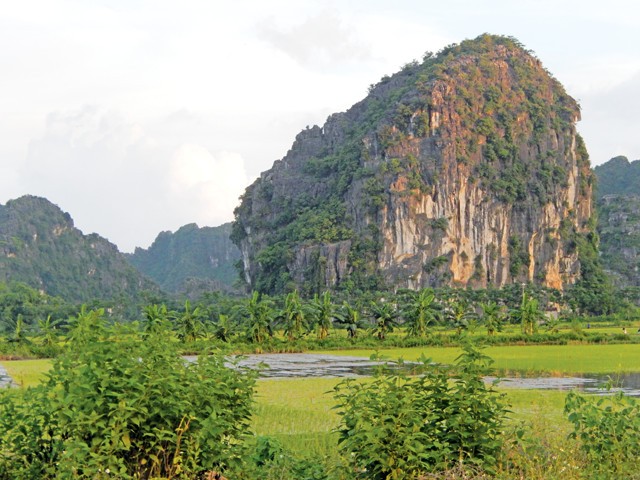 Scenic karst pillars of Northern Vietnam
Scenic karst pillars of Northern Vietnam
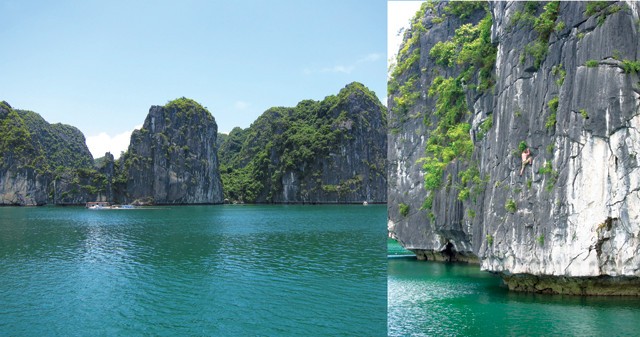 Cat Ba Island adventure travel and ecotourism destination
Cat Ba Island adventure travel and ecotourism destination
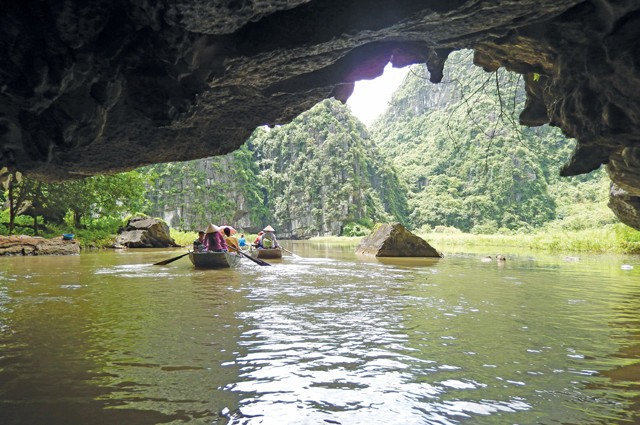 River tour up the Ngo Dong River
River tour up the Ngo Dong River
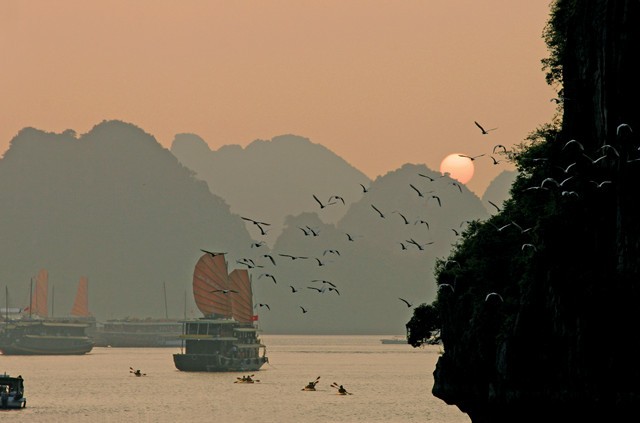 Halong Bay at Sunset
Halong Bay at Sunset
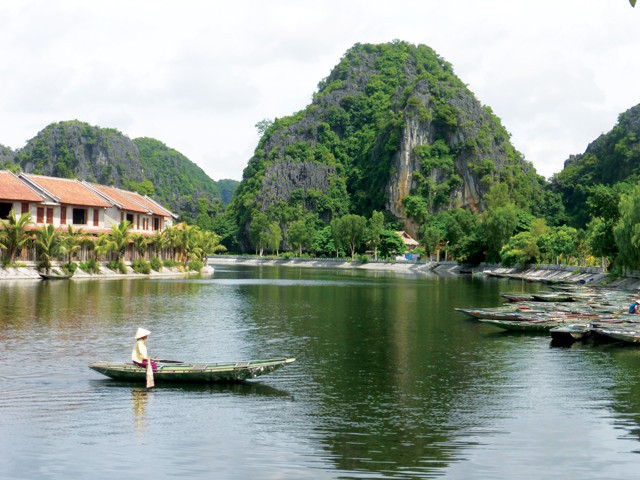 Karst Spires near Ninh Binh
Karst Spires near Ninh Binh
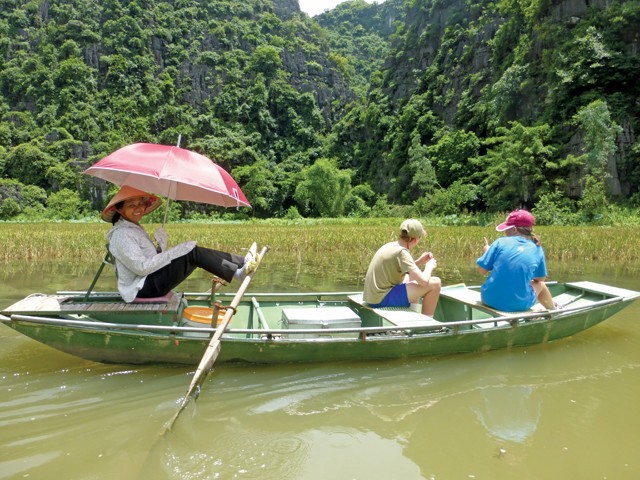 Locals Steering boats with their feet
Locals Steering boats with their feet
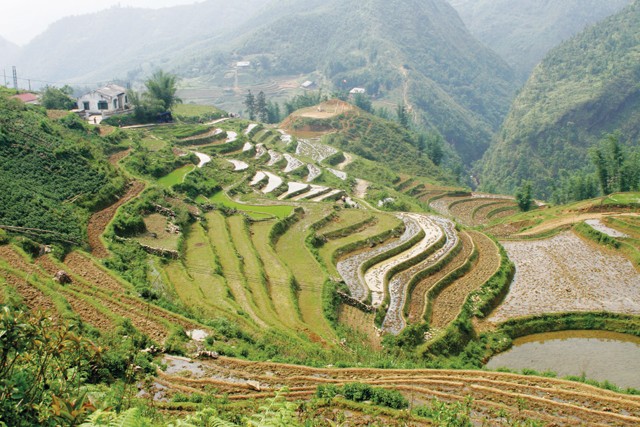 Sapa hillside covered with rice terraces
Sapa hillside covered with rice terraces
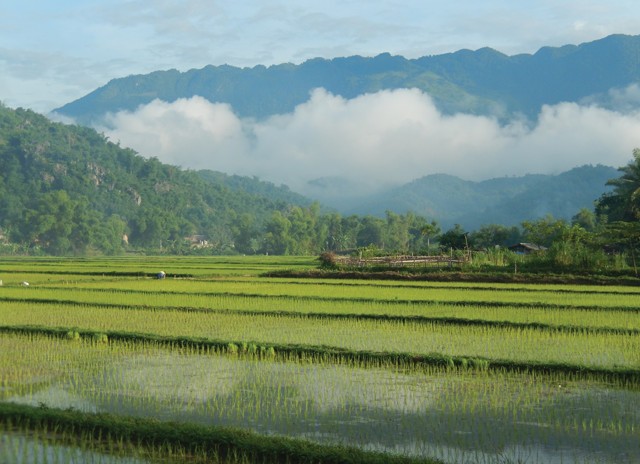 Hoa Binh rice paddies
Hoa Binh rice paddies
 Fansipan Massif Visible From Sapa
Fansipan Massif Visible From Sapa
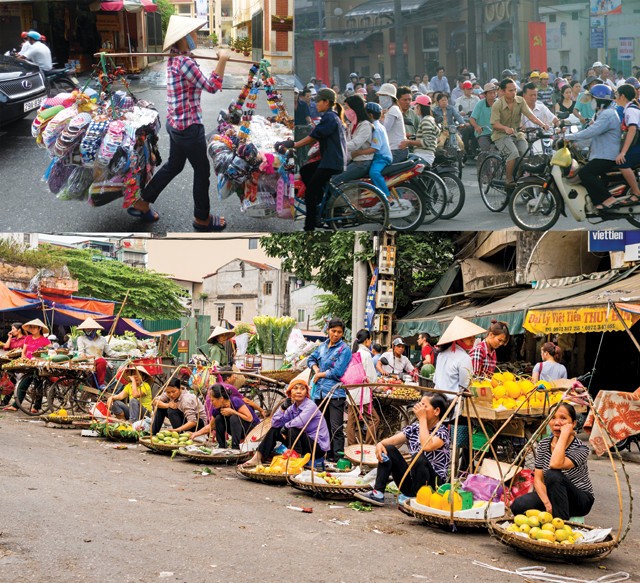 Shopping in the Old Quarter of Hanoi
Shopping in the Old Quarter of Hanoi
FAQ: Geology of the Fansipan Massif
1. What type of rock primarily makes up the Fansipan Massif?
The Fansipan Massif is primarily composed of granite, dating back approximately 35 million years.
2. How did the Red River Fault influence the formation of Fansipan?
The Red River Fault’s tectonic activity led to the uplift of the Fansipan Massif and the juxtaposition of different rock types.
3. What is the significance of the Sapa Metamorphic Complex near Fansipan?
The Sapa Metamorphic Complex showcases diverse metamorphic rocks and structural features, revealing the region’s complex geological history.
4. How does the climate in Northern Vietnam affect the landscape around Fansipan?
The tropical climate accelerates weathering and erosion, contributing to the region’s distinctive karst topography and steep valleys.
5. Can visitors trek to the summit of Fansipan, or is there an easier way to reach the top?
Visitors can either trek to the summit or take a cable car, which significantly reduces the time and physical exertion required.
6. What kind of petroglyphs can be found at the Sapa Ancient Rock Field?
The Sapa Ancient Rock Field contains petroglyphs depicting people, animals, geometric patterns, and abstract symbols.
7. Which ethnic minority groups can visitors encounter near Fansipan?
Visitors can experience the cultures of the Hmong, Dao, Tay, and Giay ethnic minority groups.
8. How does tourism potentially impact the geology and environment of Fansipan?
Tourism can lead to increased erosion, waste generation, and habitat disturbance if not managed sustainably.
9. What geological features characterize the karst topography near Fansipan?
Karst topography near Fansipan includes limestone formations, caves, sinkholes, and underground drainage systems.
10. What services does SIXT.VN offer to help visitors explore the geology of Fansipan?
SIXT.VN provides guided tours, transportation options, accommodation choices, and customized tour packages tailored to explore Fansipan’s geological wonders.



